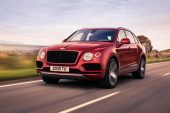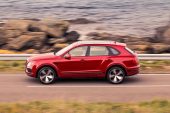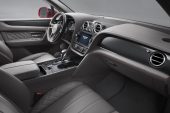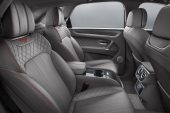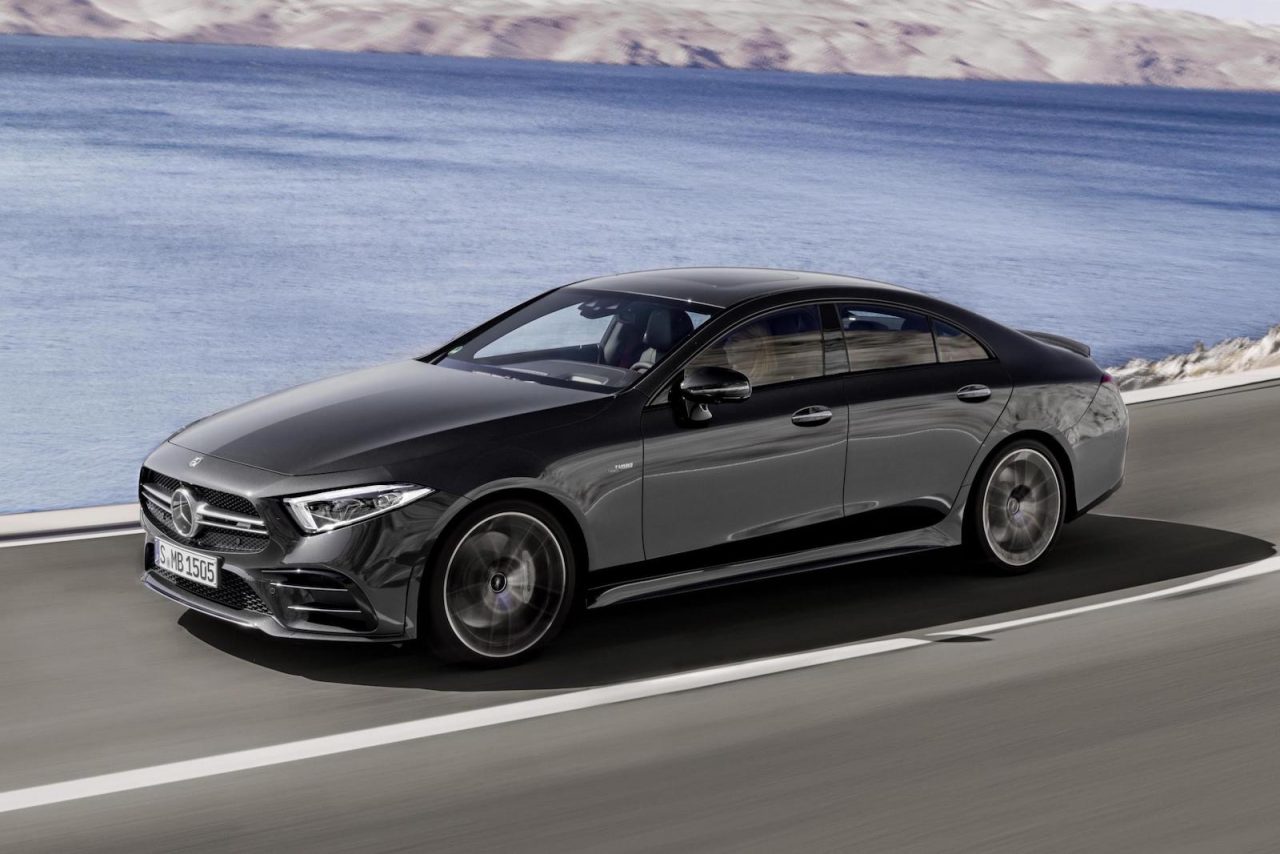Bentley has officially unveiled a new petrol version of its Bentayga SUV, featuring a V8 engine for the first time. It shares the same imposing body design as the existing W12 and V8 diesel models.
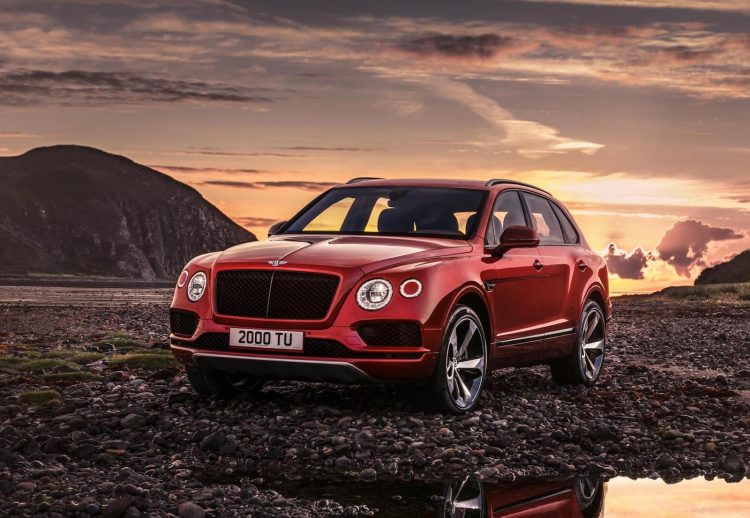
Up front is a 4.0-litre Volkswagen Group twin-turbo V8 engine that belts out 405kW of power and 770Nm of torque. This propels the super-luxury SUV from 0-100km/h in just 4.5 seconds, with a top speed of 290km/h.
Despite the superb performance, fuel economy is vastly reduced compared with the flagship W12 engine. The average fuel consumption is rated at 11.4L/100km, which is decently lower than the 13.1L/100km average for the W12.
Bentley is offering carbon ceramic brakes for the first time on the Bentayga with the V8 model. It’s described as the largest and most powerful braking system ever fitted to a road-going Bentley, with the front setup apparently sitting as the world’s largest of any production car.
There’s eye-popping 440mm front discs with insane 10-piston calipers, while the rear gets 370mm discs which are about the size of serious setups on the front of other sports cars. Bentley says these provide a maximum braking torque of 6000Nm.

Wrapping the brakes are 11 different alloy wheel options, including all-new 22-inch five-spoke items with a black and polished finish. Other styling revisions include a black and chrome grille, and quad exhaust outlets, bespoke to the V8.
Customers can option for the Bentley Dynamic Ride suspension as well which the company claims is the world’s first electric active roll control technology using a 48V system. This is able to instantly counteract lateral roll to ensure maximum comfort and contact patch for the tyres.
Inside, the Bentayga V8 features an 8.0-inch touch-screen infotainment system with sat-nav, a 60Gb hard drive, and various stereo systems on offer including a 1950-Watt, 18-speaker arrangement for big music lovers. The rear seat also adds a 10.2-inch Android tablet with 4G connectivity.
The new variant is set to go on sale a bit later this year, with Australian prices yet to be confirmed. See below for the full specs.
Technical Specification
| Engine | |
| Type | 4.0-litre, 32-valve, twin-turbocharged V8 |
| Max Power | 542 bhp / 404 kW / 550 PS @ 6,000 rpm |
| Max Torque | 770 Nm / 568 lb. ft. @ 1,960-4,500 rpm |
| Transmission | |
| Driveline | ZF eight-speed automatic gearbox, permanent all-wheel drive with 40:60 front to rear torque split |
| Ratios | 1st: 4.714; 2nd: 3.143; 3rd: 2.106; 4th: 1.667; 5th: 1.285; 6th: 1.000; 7th: 0.839; 8th: 0.667 |
| Final Drive | 3.308 |
| Brakes, Wheels and Tyres | |
| Front Brakes | 400mm ventilated iron / 440mm carbon-silicon-carbide |
| Rear Brakes | 380mm ventilated iron / 370mm carbon-silicon-carbide |
| Wheels | Optional 20”; standard 21”; optional 22” |
| Tyres | Pirelli 275/50R20, 285/45 R21, 285/45 ZR21, 285/40ZR22 |
| Steering | |
| Type | Electronic Power Assisted Steering, variable ratio |
| Turns lock-to-lock | 2.3 turns |
| Turning circle | 12.4 m / 40.6 ft |
| Suspension | |
| Front | Four link double wishbones, optional 48V electric active anti-roll bar |
| Rear | Trapezoidal multi-link, optional 48V electric active anti-roll bar |
| Springs and dampers | Self-levelling air suspension, Continuous Damping Control |
| Dimensions | |
| Wheelbase | 2995 mm / 117.9” |
| Overall length | 5140 mm / 202.4” |
| Width (across body) | 1998 mm / 78.7” |
| Width (inc. mirrors) | 2224 mm / 87.6” |
| Overall height | 1742 mm / 68.6” |
| Fuel tank | 85 litres / 18.7 UK gallons / 22.5 US gallons |
| Boot volume | Seats up – 484 litres; seats folded – 1774 litres (five-seat variant) |
| Kerb weight (EU) | 2395 kg / 5280 lb (five-seat variant) |
| Gross vehicle weight | 3250 kg / 7165 lb |
| Performance – provisional and subject to Type Approval | |
| Top speed | 180 mph / 290 km/h |
| 0-60 mph | 4.4 secs |
| 0-100 km/h | 4.5 secs |
| Fuel Consumption (EU cycle) – provisional and subject to Type Approval | |
| Urban | 18.1 mpg / 15.6 litres/100 km |
| Extra Urban | 31.4 mpg / 9.0 litres/100 km |
| Combined | 24.8 mpg / 11.4 litres/100 km |
| CO2 emissions | 260 g/km |
| Emissions Controls | EU 6 |

